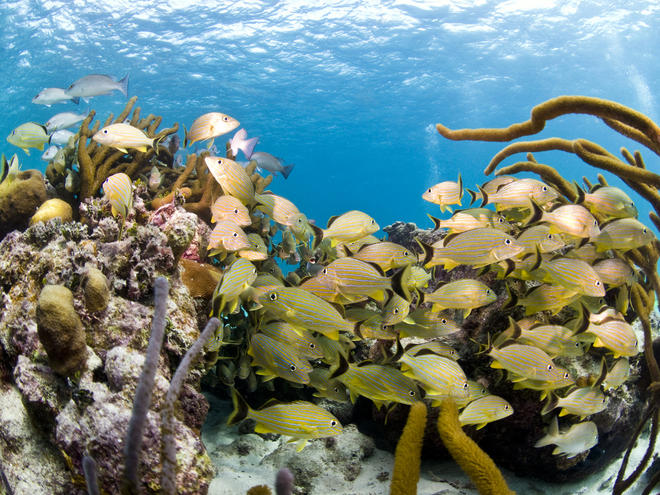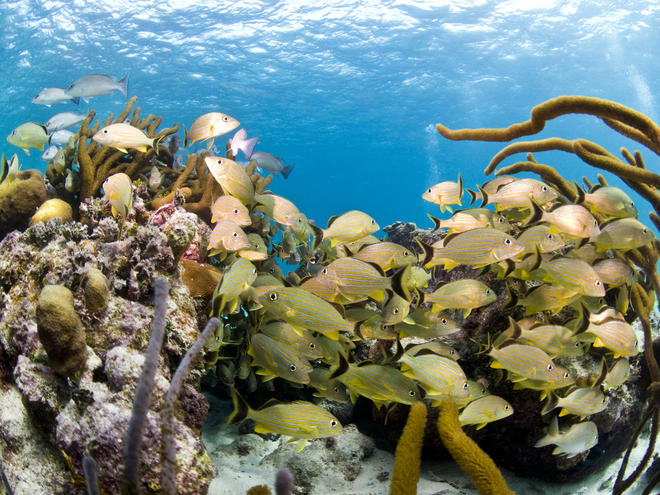A new plan to save Belize’s livelihood-giving reef and coasts
Published by the World Wildlife Fund

The coastal nation of Belize is at a crossroads. The Belize Barrier Reef System supports the livelihoods of more than half the nation’s population and provides numerous benefits including cultural heritage, protection from storms, and habitat for endangered species.
But this same ecosystem in under threat. In 2009, the reef system was added to UNESCO’s List of World Heritage in Danger. It remains on the list today because of mangrove deforestation, unsustainable coastal development and offshore oil exploration.
The good news is a coastal zone management plan can safeguard Belize’s natural assets and produce a win-win opportunity for the people and environment. New research by WWF scientists and collaborators describes the government-led planning process which identified risks posed by human activities and measured how different development decisions impact the Belizean people and species.
For six years, the team organized meetings with Belizean community leaders, tour guide associations, fishing cooperatives, businesses, academia and civil society. These stakeholders discussed ongoing problems related to the barrier reef, mangroves, and seagrass meadows. Issues included the depletion of fishing stocks due to mangrove destruction and overfishing, the negative impact of agricultural runoff on tourism, unplanned coastal development and beach erosion. Local citizens also noted problems with river flooding, which contaminates seawater during the rainy season.
The planning and research teams combined this input with scientific research, development guidelines, and government reports to create a detailed picture of Belize’s coastal resources, the most important benefits derived from them, and the main activities in each region.
Their results became the basis for Belize’s first Integrated Coastal Zone Management Plan (ICZMP). Signed into law in August 2016, the ICZMP establishes guidelines for the sustainable use of coastal-marine resources in and around Belize’s livelihood-giving reef and coasts.
Belize regularly receives proposals from foreign interests to develop its cayes and atolls – the small islands between the barrier reef and mainland. Government agencies and NGOs can quickly evaluate whether a given pitch fits into this shared sustainable vision and aligns with local development guidelines. The plan also provides a comprehensive run-down of development and conservation opportunities, including specific impacts (loss of revenue, jobs, the amount and location of mangrove habitat at highest risk to degradation) and benefits to Belize’s coastal communities.
The Belize ICZMP lays the groundwork for a zoning scheme that protects the coastal zone and establishes much needed baselines for the eventual de-listing of the reef system from UNESCO’s “in danger” list. It’s also a model for other coastal nations around the world where overfishing and habitat degradation are increasingly serious problems.
Read the full article at: http://feedproxy.google.com/~r/WWFStories/~3/-i5aOwW6Ago/a-new-plan-to-save-belize-s-livelihood-giving-reef-and-coasts


